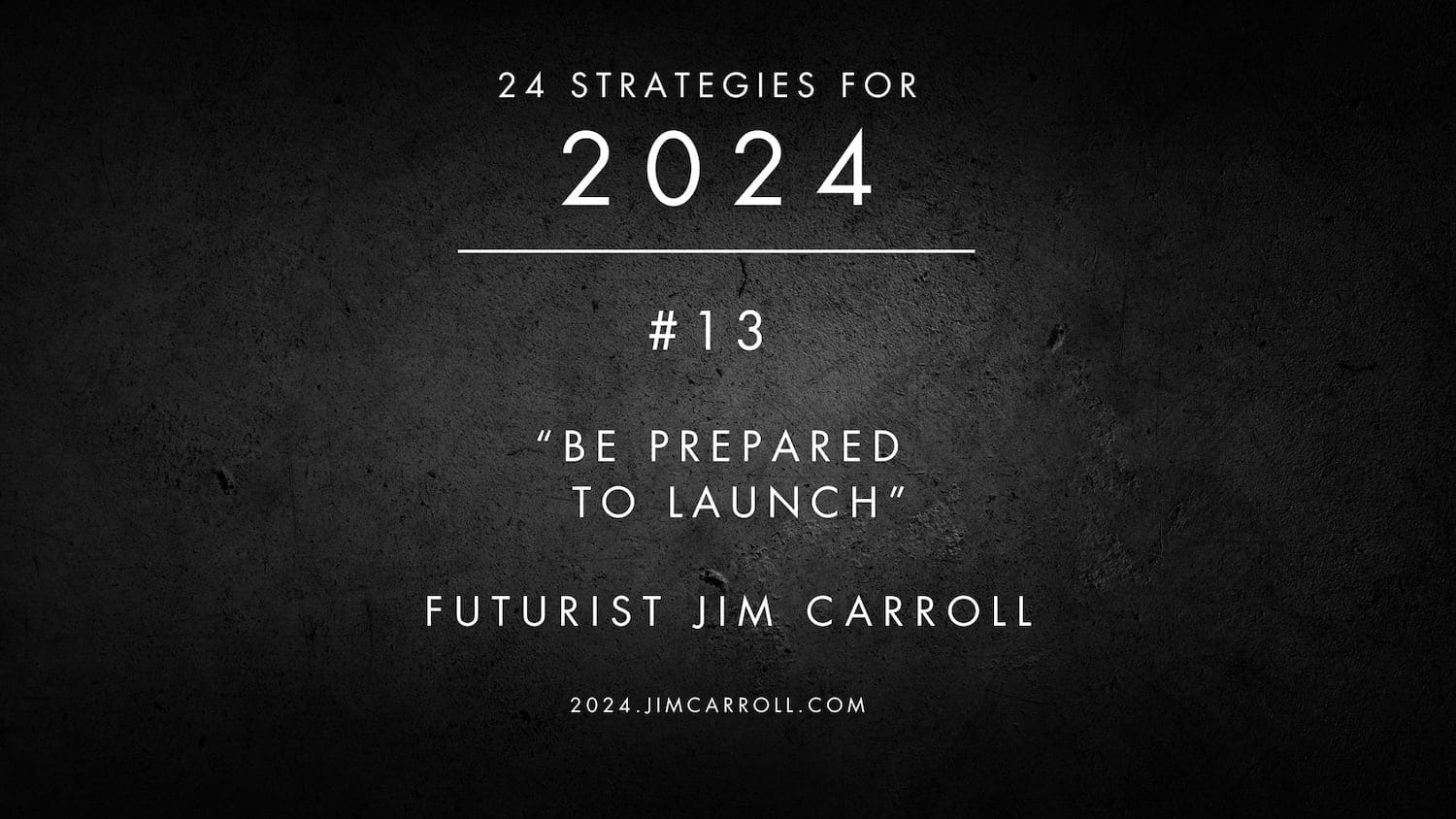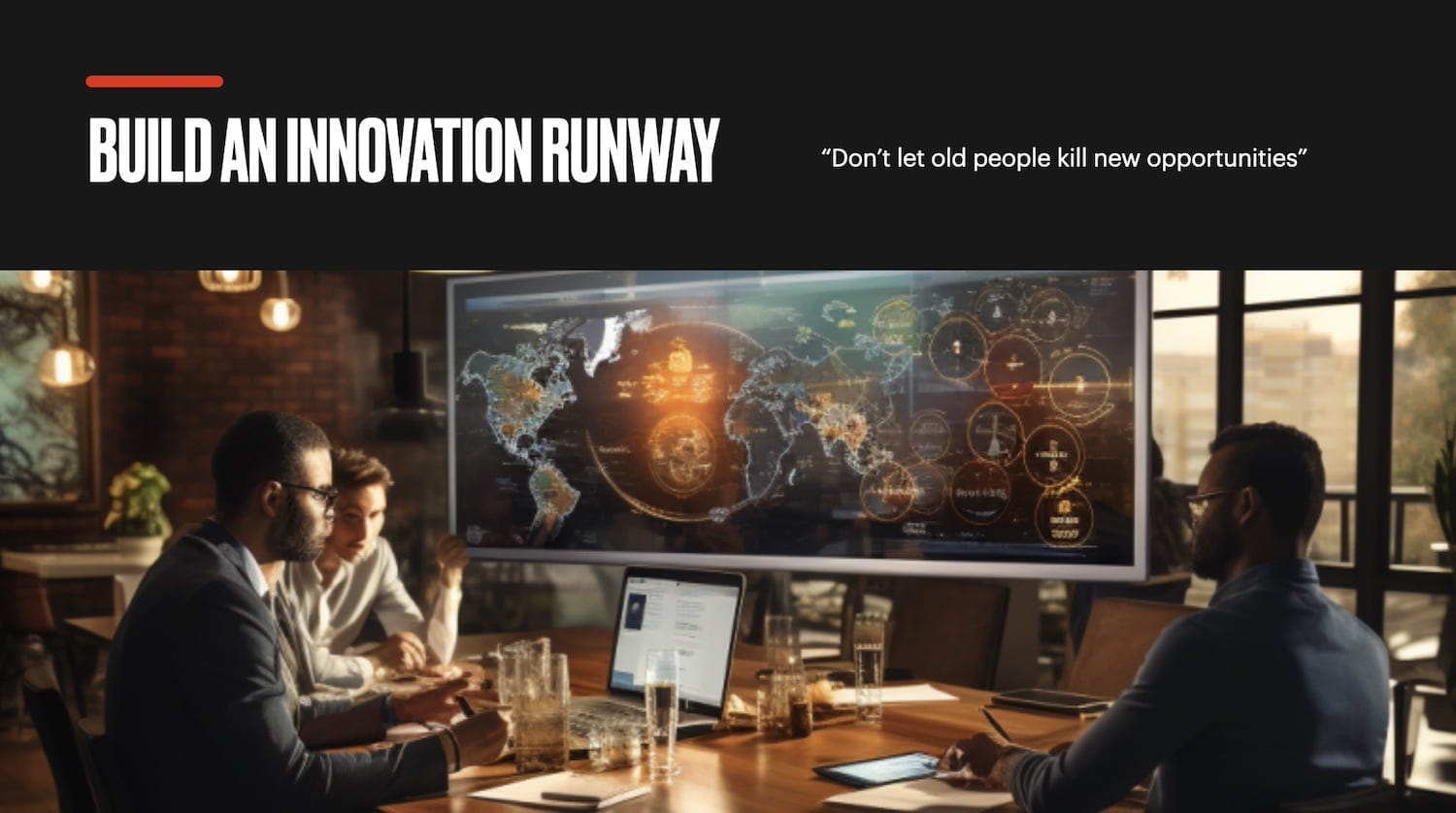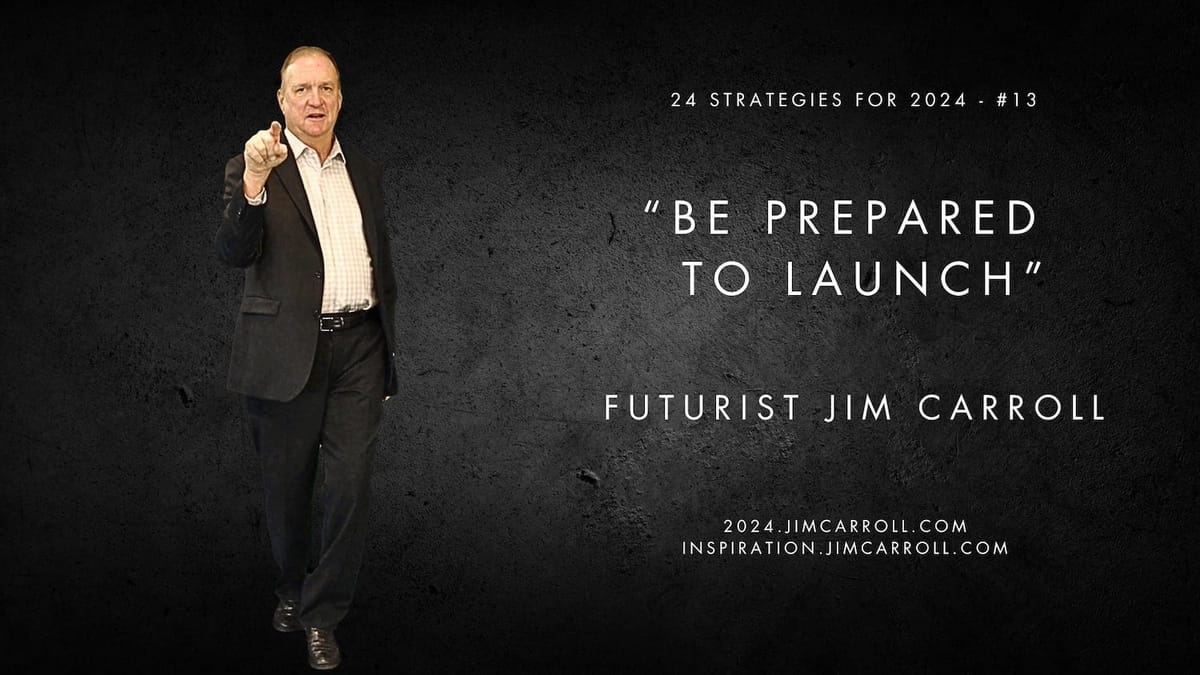Futurist Jim Carroll is running a series that began November 27, 2023, and will end on January 1, 2024 - '24 Strategies for 2024.' Rather than running a trend series for the upcoming year as he has previously, this series will examine a number of his personal beliefs on how to best align yourself with the future. There will be a post each weekday, excluding weekends and holidays, until the series runs its course. You will find it on his blog at https://blog.jimcarroll.com, or the website https://2024.jimcarroll.com
"Be prepared to launch!" - Futurist Jim Carroll
Too many great ideas fail to launch. There are lots of bold new initiatives that are never implemented. Many organizations identify wonderful new strategic opportunities but never pursue them. People develop fascinating new skills and capabilities but never get to the step of actually using them. There are many leadership commitments to a new future that fail to go forward. Concepts that fail to gain traction, and initiatives that fail to initiate.
Our world is one of failed initiatives.
If you do anything in 2024, try to avoid letting that happen to you - make sure that any idea is followed up with actual initiative and action. That's strategy #13 in my 24 Strategies for 2024 series. Innovation!

One of the slides that worked its way into the closing moments of my talk this year suggested that organizations should 'Build an innovation runway.'

It carried the subtitle 'Don't let old people kill new opportunities.' Sad, but true - and t it's based on a recent real story I witness all too often.
Imagine that a company has identified a fascinating new technology that provides better insight, and far more qualitative information, and does so at about 1/10th of the cost of traditional methods It decides to make the necessary investment to bring the concept, opportunity, and benefits to the organization - the future is too good to pass up! Immediately, though, the long-established career staff view the technology as a threat that should be battled against, not a significant new transformative opportunity that should be pursued. They perceive that it might take their jobs away, and yet refuse to undertake the steps to learn how to use it. The result is that they battle back against its implementation, refuse to advance it forward, and do everything they can to disparage what it represents.
Stubbornly, they cling to the old ways of doing things, ensuring that old, irrelevant, and high-cost methodologies remain in existence. Often, this group consists of change-adverse baby boomers, a group that has developed a reputation among the younger crowd of simply being anti-anything, a cohort that does everything it can to stifle the progress and opportunity of tomorrow.
In the face of this determined pushback, the leadership team does ... nothing. They choose not to get involved, never promulgating any new policies or direction that would mandate the use of this new technology in light of obvious current and future benefits. They do nothing to set the tone of progress that it brings, nor a message of advancement that would give the new initiative the solid foundation of action that is required. They never actually really communicate why the new technology is being pursued and the benefits that would come about. And worse - they never empower the younger generation who fully understand the potential of the tool to fully take the reins and run with it.
They fail to launch - they never build a runway for it to go forward. The idea is left in the hangar, gathering dust next to an entire fleet of failed initiatives. Old wins out over new; a significant financial investment in a new opportunity is wasted, and the future is lost.
Way back in 2003, a fellow named Lloyd Adams saw me speak at one of the customer-oriented events of the company for whom he worked, SAP. He was inspired by my message of action from the stage and ended up booking me about 30 or 40 more times through the next few years to share this message further. Today, he is the CEO of SAP North America, and recently wrote this article which gets to the heart of the matter of the implementation of tomorrow.
The most important ingredient of any successful technology implementation is this: internal and external business alignment. You must start with a well-documented set of tangible business outcomes, and every single person involved in the project must be able to answer, “Why are we doing this?”
The people you put on the project are so important. The tech is integral, obviously, but if there’s a lack of buy-in or understanding, you’ll essentially be left holding a hunk of metal you can’t drive.
If only a fraction of your frontline employees are visibly engaged in transformation initiatives, you’ll be destined to fail. It can’t be all about c-suite directives. Staffing well and cultivating winning resources are the best ways to counter pitfalls in this area.
More so, you must give your employees the time and space to succeed. Don’t allow an “illusion of staffing” to occur, where you divide your team between tactical, day-to-day operations and the overall transformation initiative. You must have your best people dedicated to your evolution full time.
In short, they must know why they’re doing it, and they must be given time to do so. Next up is determining how they will go about it.
Tech transformation stalled? 4 tactics to make them stick
14 June 2023, Quartz
I couldn't have said it better myself.
Yet I am mystified by why this happens so often - and by the fact that so often, the approach of an organization to innovation and the future makes absolutely no sense in light of obvious realities.
Years ago, I was booked to speak on the concept of innovation and transformation at a major global printing company - an industry facing a difficult future given the digitization of so many of its products and markets. The leadership team - right up to the CEO - was adamant that a bold transformation was necessary, and that I should help them deliver this message as part of the kick-off of a two-day meeting for their entire leadership team. I spent a lot of time with the organization in advance to understand the uniqueness of their business, their goals for tomorrow, and some of the action plans that innovation-oriented staff were ready to pursue.
I delivered my message with aplomb as I was engaged to do - and then, the CEO, in his follow-up message. deflated any bubble of enthusiasm that I had managed to share with a contradictory message that was the opposite of anything he had said earlier. He noted that innovation and transformation would be a difficult and complex voyage and that it would be best if everyone would stay focused on their core mission of squeezing as much profit as possible out of existing lines of business. There was little time, he suggested, to waste on frivolous, difficult-to-achieve ideas - and that a slow and cautious approach was warranted. However, to ensure the organization is moving forward, he announced a rather small 'innovation fund,' and the establishment of an 'innovation team', that would study the necessary steps to move towards tomorrow, and would report back in 6 months.
Welp! Although my keynote ended up receiving rave reviews, inside I knew that I had accomplished nothing. Today, I look at the state of the organization and can see that it is in its final active throes of death. I always wonder what might have been.
I've seen this type of thing unfold in real time more often than you can imagine - my unique job has me privy to the deep dark leadership failures of many a major organization. And here's what I know - a failure to address the necessary ingredients for the launch of any new initiative, idea, technology, or action plan will guarantee its failure to launch. Without a runway, you are simply guaranteeing that your future will crash and burn.
Many challenges can get in the way of the initiatives that will take you to tomorrow. But that's to say it should not be done!
That's why one of the most important strategies you can chase this year is to launch - build a runway, line up the initiatives, and make sure they get off the ground!
Futurist Jim Carroll remembers well the book and concept of the Peter Principle - a popular leadership principle of the past that outlines how many leaders rise to the level of their incompetence. He sees it in action all the time.

